Moravian Yeast Roll Recipe
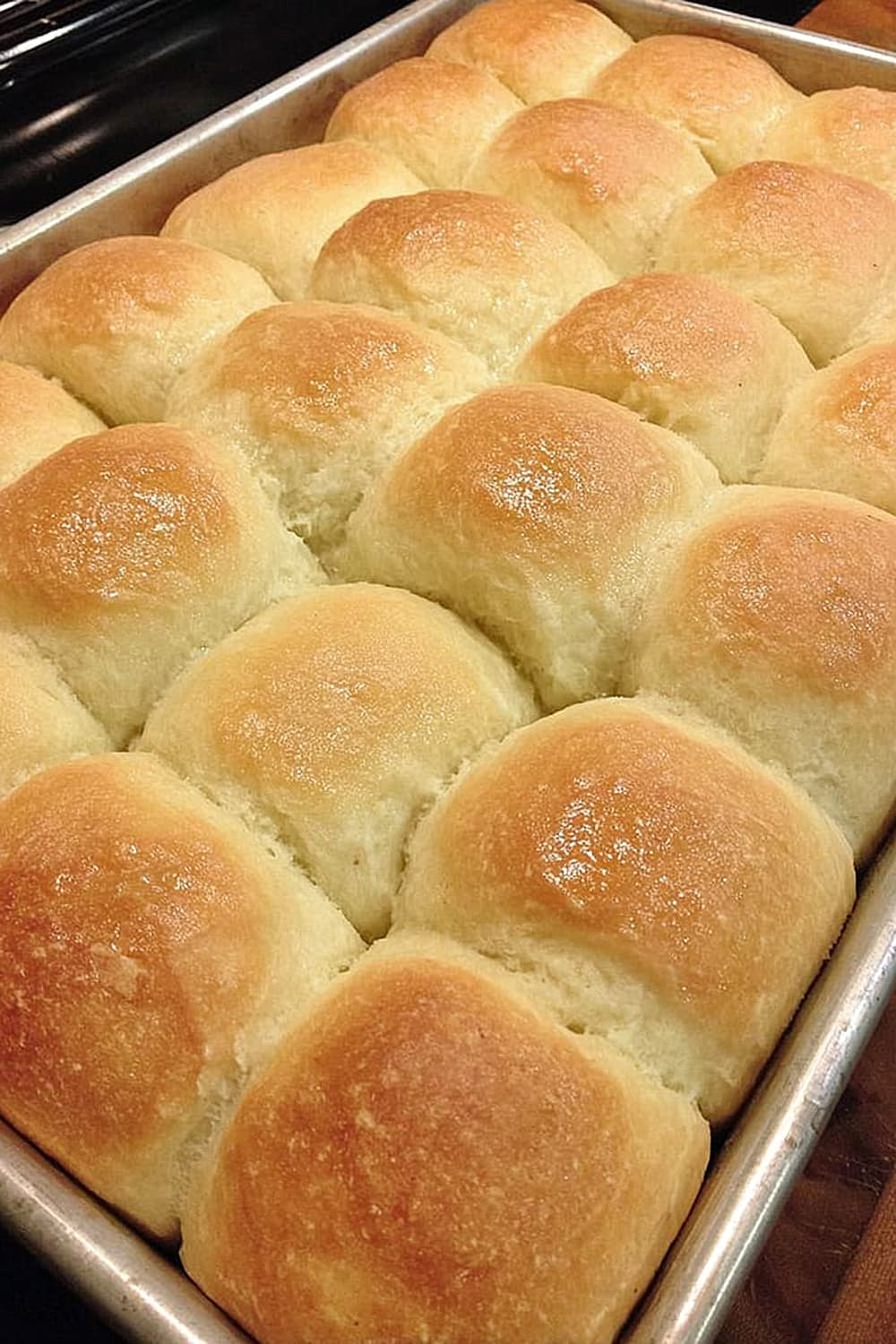
These pillowy, golden rolls are about to become your secret weapon for making any meal feel like a special occasion.
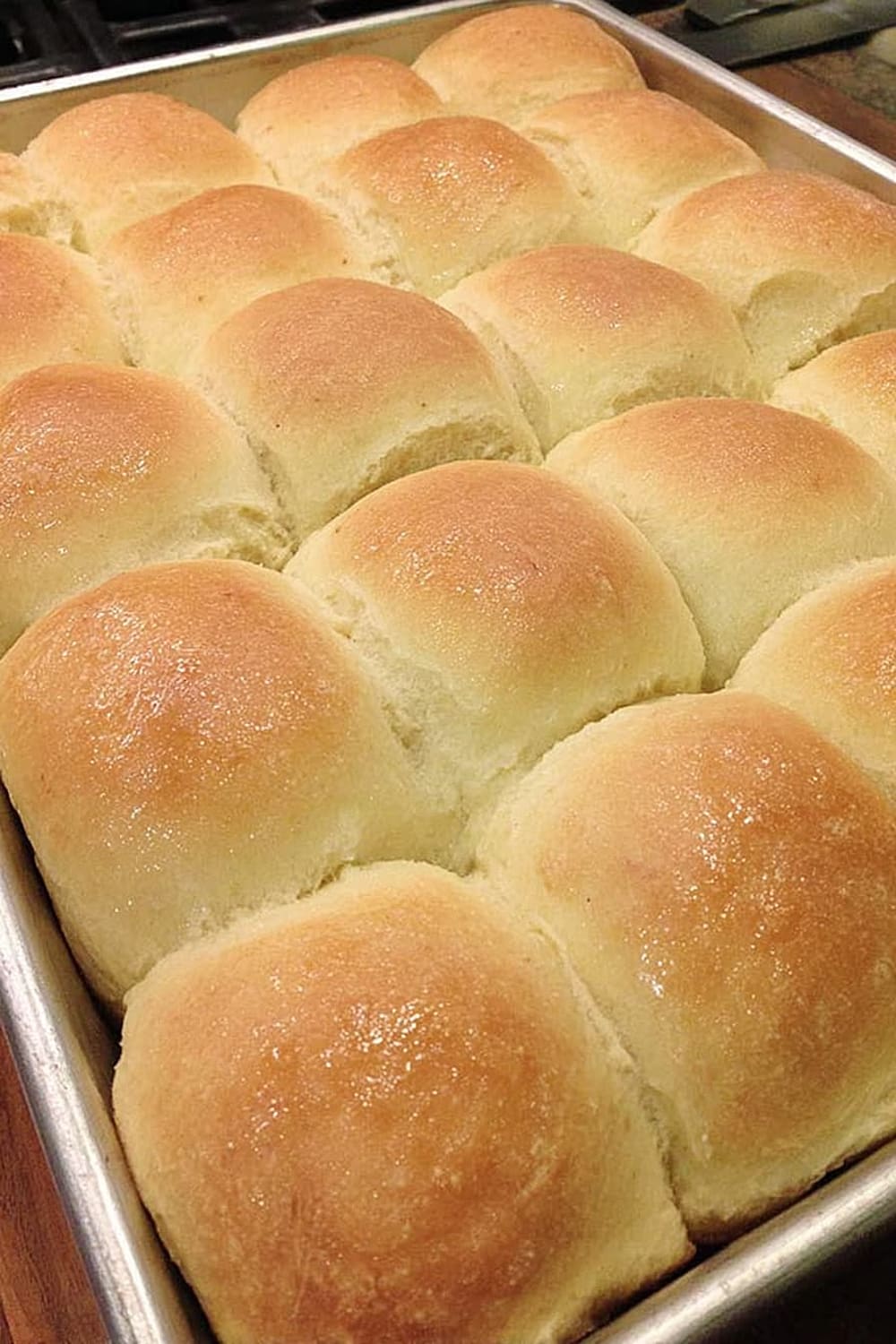
The beauty of Moravian yeast rolls lies in their incredibly soft texture and subtle sweetness that pairs perfectly with everything from holiday turkey to weeknight soup.
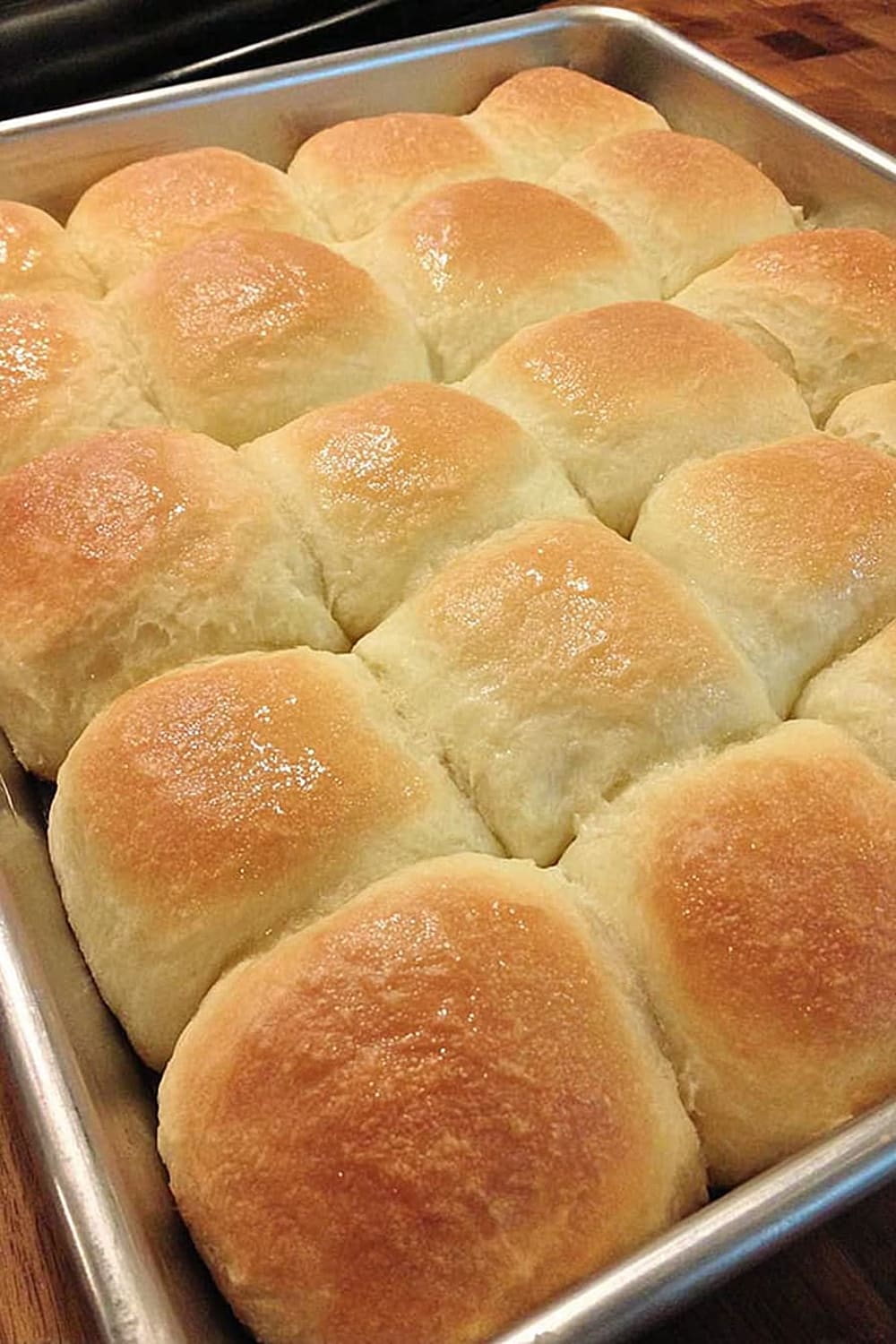
What makes this recipe absolutely genius is the overnight refrigeration step that develops incredible flavor while doing zero work – basically the ultimate lazy baker’s dream.
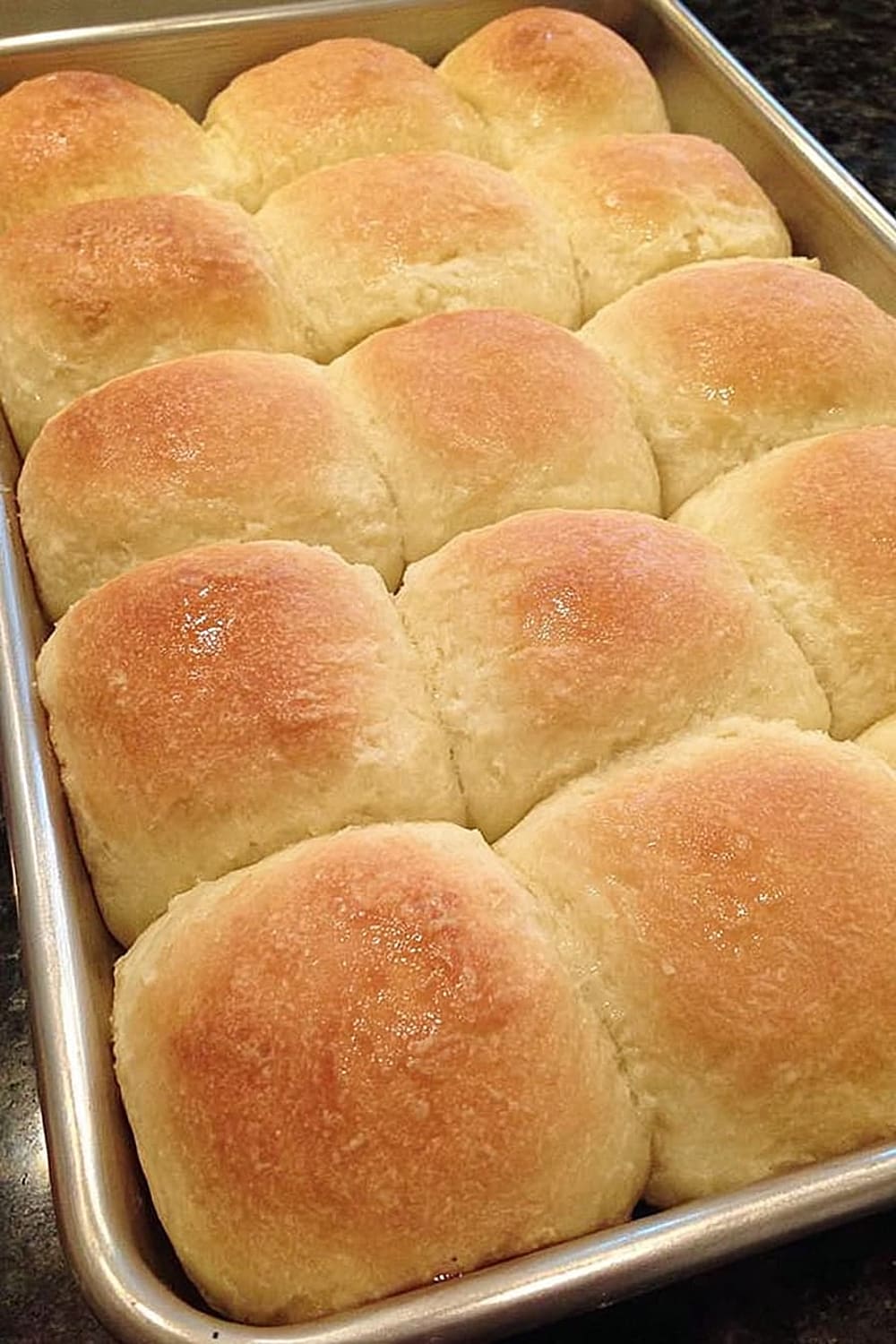
The moment you brush these beauties with melted butter before baking, your kitchen transforms into something that smells like pure comfort and happiness.
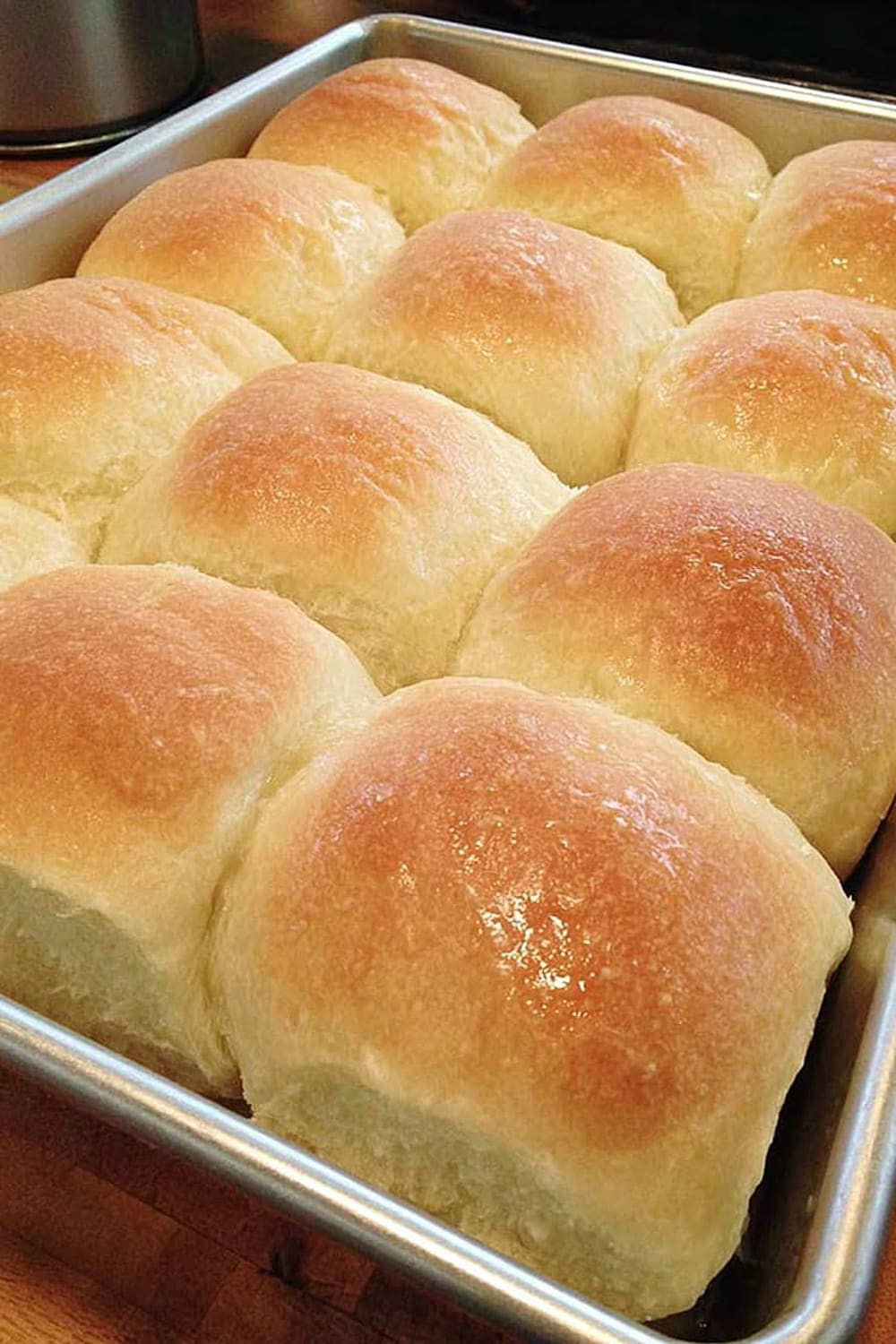
Each bite delivers that perfect balance of tender crumb and slightly crispy exterior that makes people immediately ask for the recipe.
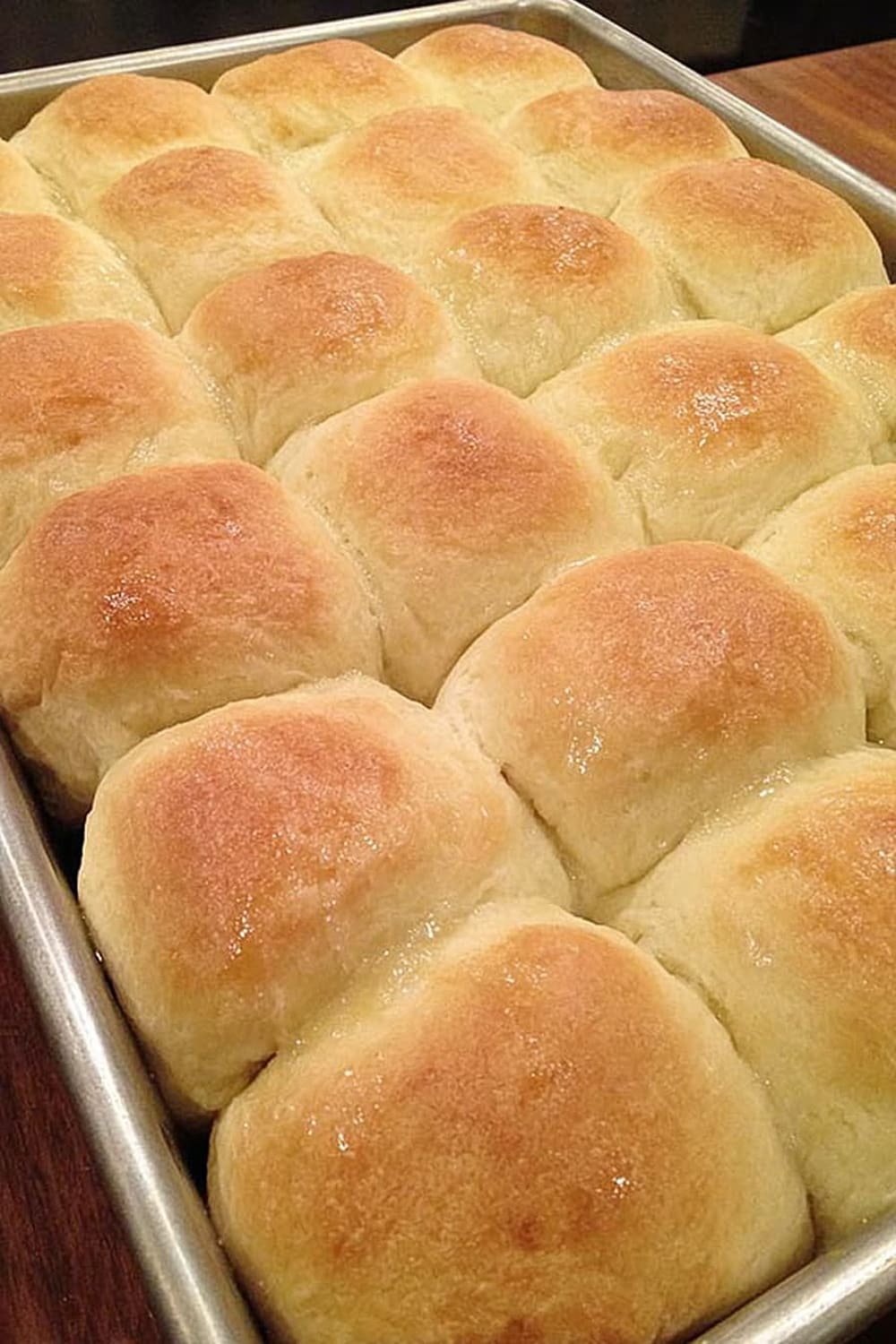
Fair warning: once you master these rolls, you’ll become the person everyone begs to bring bread to every gathering, and honestly, that’s not a bad reputation to have.
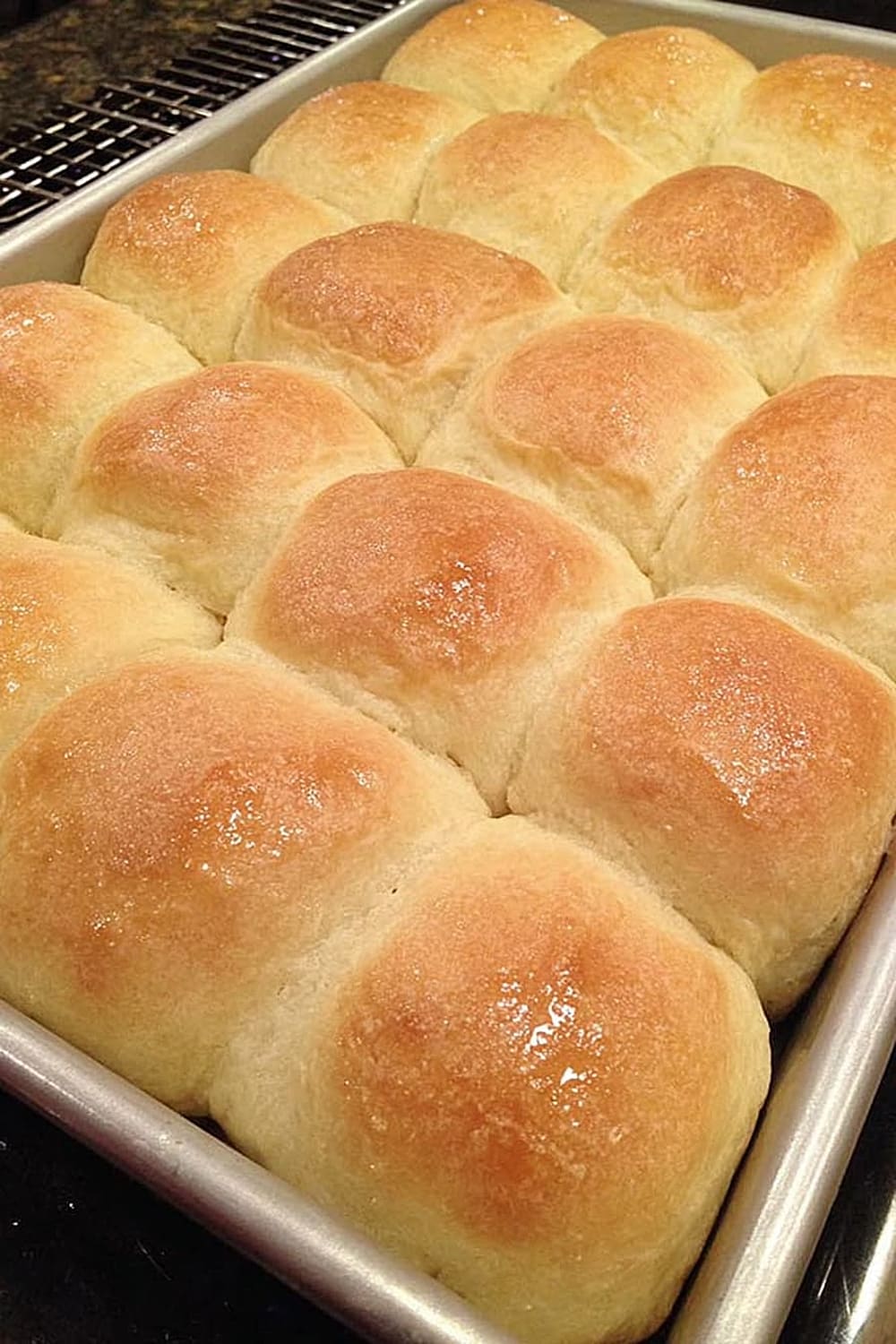
Ingredients
For the Base Mixture
- 1 cup hot water (120-130°F)
- 1 teaspoon salt
- 6 tablespoons shortening or butter flavor Crisco
- 1 /4 cup sugar
For the Yeast Activation
- 1 pack dry granular yeast (or 1 tablespoon)
- 2 tablespoons lukewarm water
For the Dough
- 1 egg, beaten
- 3-4 cups flour (bread flour or regular flour)
For Finishing
- 2 tablespoons melted butter
Instructions
Prepare the Base
- 1 In a large mixing bowl, combine 1 cup hot water (120-130°F), 1 teaspoon salt, 6 tablespoons shortening, and 1/4 cup sugar. Stir until the shortening begins to melt and the sugar dissolves completely. The mixture will look cloudy at first, which is perfectly normal.
- 2 In a small bowl, dissolve 1 pack dry yeast in 2 tablespoons lukewarm water. Let this sit for 3-5 minutes until it becomes foamy and bubbly – this indicates your yeast is active and ready to work its magic.
- 3 Allow the shortening mixture to cool to lukewarm temperature (about 100°F). This is crucial because water that’s too hot will kill the yeast, while water that’s too cool won’t activate it properly. Test with your finger – it should feel just slightly warm.
Create the Dough
- 4 Add the dissolved yeast mixture to the cooled shortening mixture, stirring gently to combine. You should see the yeast beginning to distribute throughout the liquid.
- 5 Using a stand mixer fitted with the dough hook attachment, combine the yeast mixture with 1 beaten egg and begin adding flour gradually. Start with 3 cups flour, mixing on low speed to prevent flour from flying everywhere.
- 6 Continue adding flour gradually, up to 4 cups total, until you achieve a soft dough that pulls away from the sides of the bowl but isn’t overly stiff. The dough should feel slightly sticky to the touch but manageable – typically around 3½ cups flour works perfectly.
First Rise and Chill
- 7 Cover the bowl tightly with plastic wrap or a damp kitchen towel and refrigerate for several hours or overnight. This slow, cold fermentation develops incredible flavor and makes the dough much easier to handle.
Shape and Final Rise
- 8 Remove the chilled dough from the refrigerator and turn it out onto a lightly floured surface. Briefly knead the dough by folding it over onto itself several times until it feels smooth and cohesive.
- 9 Using kitchen shears or a sharp knife, divide the dough into sixteen equal portions. A kitchen scale makes this process incredibly precise if you want perfectly uniform rolls.
- 10 Shape each portion into a round dough ball by tucking the edges underneath and rolling gently between your palms. Place the shaped rolls evenly spaced in a greased 9×13-inch baking pan, allowing room for expansion.
Final Rise and Bake
- 11 Let the rolls rise in a warm, draft-free location for 1-2 hours or until almost doubled in bulk. For faster rising, place the pan in a barely warm oven (200°F for 1 minute, then turn off) – this cuts rising time in half.
- 12 Preheat your oven to 400°F (204°C) during the last 15 minutes of rising time.
- 13 Gently brush the tops of the risen rolls with 2 tablespoons melted butter just before baking. This creates that beautiful golden color and adds extra richness.
- 14 Bake for 10 minutes or until the tops are lightly golden brown and the rolls sound hollow when tapped. The internal temperature should reach 190°F (88°C) for perfectly cooked rolls.
Recommended Equipment and Kitchen Tools
Essential Tools (for best results)
- Stand mixer with dough hook – Makes incorporating flour effortless and develops proper gluten structure without overworking the dough
- Kitchen scale – Ensures perfectly portioned rolls and consistent results every time you make this recipe
- Instant-read thermometer – Takes the guesswork out of water temperature for yeast activation and checking doneness
- Kitchen shears – Creates clean cuts through dough without deflating the delicate structure
Helpful Upgrades
- Silicone spatula – Perfect for scraping down bowl sides and handling sticky dough without adding excess flour
- Bench scraper – Makes dividing dough into equal portions quick and precise
- Parchment paper – While not necessary for the greased pan, it makes cleanup effortless
- Digital kitchen timer – Helps track multiple rising times without guesswork
Nice-to-Have Options
- Proofing basket – Creates a warm, humid environment for consistent rising
- Pastry brush – Ensures even butter application for that perfect golden finish
- Storage containers – Airtight containers keep leftover rolls fresh for days
Recipe Variations and Dietary Modifications
Gluten-Free Adaptation
- Replace flour with 3½ cups gluten-free flour blend (one containing xanthan gum)
- Add 1 teaspoon xanthan gum if your blend doesn’t include it
- Expect slightly denser texture but equally delicious flavor
- May require 5-10 minutes additional baking time
Dairy-Free Modifications
- Substitute shortening with 6 tablespoons vegan butter or coconut oil (solid)
- Use 2 tablespoons melted coconut oil instead of butter for brushing
- Results in slightly different flavor profile but maintains tender texture
Enriched Flavor Variations
- Herb rolls: Add 2 tablespoons fresh chopped rosemary or thyme to the flour
- Sweet rolls: Increase sugar to ⅓ cup and add 1 teaspoon vanilla extract
- Garlic rolls: Mix 2 cloves minced garlic into the melted butter for brushing
- Whole grain: Replace 1 cup regular flour with whole wheat flour for added nutrition
Make-Ahead Options
- Shape rolls and freeze on baking sheet, then store in freezer bags up to 3 months
- Thaw overnight in refrigerator and proceed with final rise
- Baked rolls freeze beautifully for up to 2 months
Nutritional Information and Health Benefits
Key Nutritional Highlights
Each roll contains approximately 180 calories with a balanced macronutrient profile of carbohydrates for energy, moderate fat for satiety, and protein for muscle support. The yeast fermentation process creates beneficial compounds while making nutrients more bioavailable. With 4 grams protein per roll, these provide more staying power than many commercial bread options.
Health Benefits of Main Ingredients
The yeast fermentation process creates B-vitamins, particularly folate and niacin, essential for energy metabolism and nervous system function. Eggs contribute high-quality complete protein and choline for brain health. The flour provides complex carbohydrates for sustained energy, while the overnight fermentation partially breaks down gluten proteins, making them easier to digest. Salt helps regulate fluid balance and enhances mineral absorption.
Dietary Considerations
Contains gluten, eggs, and may contain dairy depending on shortening choice. Each roll provides approximately 30 grams carbohydrates, making portion control important for blood sugar management. The fermentation process reduces the glycemic impact compared to quick breads. Fits well into Mediterranean and traditional American dietary patterns when paired with lean proteins and vegetables.
Smart Swaps and Ingredient Substitutions
Common Substitutions:
- Shortening → Equal amount butter, coconut oil (solid), or lard for different flavor profiles
- All-purpose flour → Bread flour for chewier texture, or ½ cup whole wheat flour mixed with all-purpose for added nutrition
- Granulated sugar → Brown sugar for deeper molasses flavor, or honey (reduce liquid by 1 tablespoon)
- Dry yeast → 2¼ teaspoons active dry yeast or 1¾ teaspoons instant yeast
Budget-Friendly Swaps:
- Eggs → 3 tablespoons unsweetened applesauce or 1 tablespoon ground flaxseed mixed with 3 tablespoons water
- Butter for brushing → Additional melted shortening or neutral oil
Pantry Emergency Substitutions:
- No yeast → Use 2 teaspoons baking powder plus 1 teaspoon baking soda (won’t need rising time, but texture will be different)
- No shortening → 6 tablespoons melted butter or vegetable oil
- No eggs → ¼ cup buttermilk or plain yogurt
Pro Tips for Substitutions:
- Store opened yeast in refrigerator for up to 6 months or freezer for 1 year
- Always proof yeast before using if it’s been stored longer than 3 months
- When using liquid sweeteners, reduce other liquids slightly to maintain proper dough consistency

Make It Diabetes-Friendly
Sugar Substitutions:
- Replace ¼ cup sugar with 2 tablespoons erythritol or stevia blend designed for baking
- Monk fruit sweetener works excellently at 2 tablespoons for equivalent sweetness
- Reduces carbohydrates by approximately 12 grams per batch (0.75 grams per roll)
Flour & Carb Modifications:
- Substitute 1 cup all-purpose flour with almond flour to reduce total carbs by 15 grams
- Use ½ cup coconut flour plus ½ cup additional liquid to replace 1 cup regular flour
- Lupin flour substitution: Replace 1 cup regular flour with ¾ cup lupin flour for 20 grams carb reduction
Portion & Timing Tips:
- Make 20 smaller rolls instead of 16 for better portion control (24 grams carbs vs 30 grams per roll)
- Pair with protein like turkey or cheese to slow glucose absorption
- Best consumed earlier in the day when insulin sensitivity is typically higher
- Total Carb Reduction: Up to 35% fewer carbs with combination of substitutions
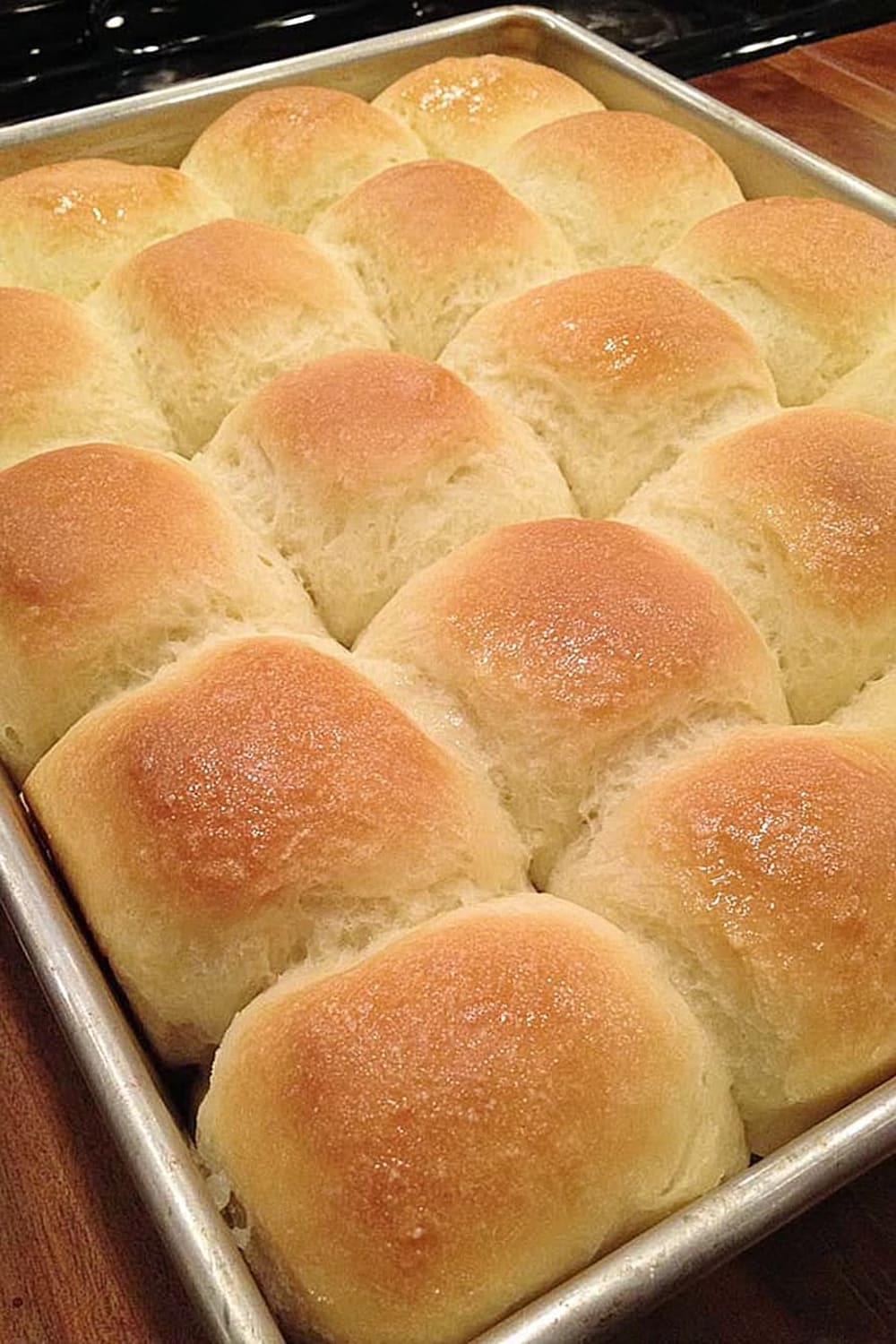
Perfect Pairing Suggestions
Beverage Pairings
These rolls pair beautifully with medium-bodied red wines like Merlot or Pinot Noir for dinner occasions, while crisp white wines such as Sauvignon Blanc complement their subtle sweetness. For non-alcoholic options, herbal teas like chamomile or sparkling apple cider enhance the rolls’ comforting qualities. Fresh buttermilk or cold milk creates a classic combination that highlights the rolls’ tender crumb.
Side Dish Recommendations
The rolls’ mild flavor makes them perfect alongside roasted root vegetables with herbs, honey-glazed carrots, or green bean almondine. Their soft texture contrasts beautifully with crispy bacon or herb-crusted pork tenderloin. For lighter meals, serve with mixed greens salad dressed with balsamic vinaigrette or creamy tomato soup for the ultimate comfort combination.
Complete Meal Ideas
Build holiday menus around these rolls with roasted turkey, sage stuffing, and cranberry sauce. For casual dinners, pair with slow-cooked pot roast, mashed potatoes, and steamed broccoli. The rolls also shine in breakfast settings alongside scrambled eggs, crispy sausage, and fresh fruit salad.
Occasion Suggestions
Perfect for Thanksgiving dinner, Easter brunch, potluck dinners, and family gatherings. Their make-ahead nature makes them ideal for meal prep Sundays or busy weeknight dinners when you want homemade bread without the fuss.
Pro Tips and Troubleshooting
Professional Techniques
The key to perfect Moravian rolls lies in temperature control – use an instant-read thermometer to ensure water temperatures are precise, as yeast is sensitive to heat variations. Overnight refrigeration isn’t just convenient; it develops complex flavors through slow fermentation while making the dough easier to handle. When shaping, work quickly to prevent the dough from warming up too much, which can make it sticky and difficult to portion.
Common Mistake Prevention
Avoid adding too much flour during mixing – the dough should remain slightly sticky for tender results. Dense rolls usually result from over-flouring or insufficient rising time. If your rolls don’t rise properly, check your yeast’s expiration date and water temperature. Uneven browning often indicates oven hot spots – rotate the pan halfway through baking for uniform color.
Storage and Make-Ahead
Store baked rolls in airtight containers for up to 3 days at room temperature, or freeze for up to 3 months. Reheat frozen rolls directly from freezer in a 300°F (149°C) oven for 10-12 minutes. The shaped, unbaked rolls can be frozen on baking sheets, then stored in freezer bags – just thaw overnight and proceed with the final rise.
Recipe Scaling
This recipe doubles beautifully for large gatherings – use a large stand mixer or mix in batches. For half-batches, all ingredients scale proportionally, but rising times remain the same.
The magic of Moravian yeast rolls lies not just in their pillowy texture and golden appearance, but in their ability to transform any ordinary meal into something memorable and special. Whether you’re planning ahead for a holiday feast or simply want to elevate a weeknight dinner, these rolls deliver professional bakery results with surprisingly simple techniques. The overnight rise develops incredible depth of flavor while fitting perfectly into busy schedules, making homemade bread accessible even for the most time-pressed home cooks. Once you experience the satisfaction of pulling these golden beauties from your oven, you’ll understand why this recipe has been treasured for generations – and why it’s about to become your go-to bread recipe for every occasion that calls for something extraordinary.